Care delivery and self-management strategies for children with epilepsy
- PMID: 35476253
- PMCID: PMC9045404
- DOI: 10.1002/14651858.CD006245.pub5
Care delivery and self-management strategies for children with epilepsy
Abstract
Background: Epilepsy is a neurological disorder affecting both children and adults. Epileptic seizures are the result of excessive and abnormal cortical cell electrical activity in the brain. In response to criticism that epilepsy care for children has little impact on long-term outcomes, healthcare professionals and administrators have developed various service models and strategies to address perceived inadequacies. This is an updated version of a Cochrane Review previously published in 2018.
Objectives: To assess the effects of any specialised or dedicated intervention for epilepsy versus usual care in children and adolescents with epilepsy and their families.
Search methods: We searched the following databases on 14 January 2020: the Cochrane Register of Studies (CRS Web), MEDLINE (Ovid, 1946 to 13 January 2020), PsycINFO (1887 to 14 January 2020), CINAHL Plus (1937 to 14 January 2020), ClinicalTrials.gov, and the World Health Organization International Clinical Trials Registry Platform. The Cochrane Register of Studies (CRS Web) includes the Cochrane Epilepsy Group Specialised Register and the Cochrane Central Register of Controlled Trials (CENTRAL). We also contacted experts in the field seeking information on unpublished and ongoing studies and checked the websites of epilepsy organisations and the reference lists of included studies.
Selection criteria: We included randomised controlled trials recruiting children and adolescents with epilepsy.
Data collection and analysis: Two review authors independently selected trials for inclusion and extracted the relevant data. We assessed the following outcomes: 1. Seizure frequency and severity; 2. Appropriateness and volume of medication prescribed (including evidence of drug toxicity); 3. Participants' reported knowledge of information and advice received from professionals; 4. Participants' reports of health and quality of life; 5. Objective measures of general health status; 6. Objective measures of social or psychological functioning (including the number of days spent on sick leave/absence from school or work, and employment status); and 7. Costs of care or treatment. The results of the data extraction and quality assessment for each study were presented in structured tables and as a narrative summary. All summary statistics were extracted for each outcome.
Main results: We included nine studies of eight interventions in the review, reporting on seven distinct self-management programmes for educating or counselling children with epilepsy and their parents, and one new model of care. Based largely on self-reported outcomes, each programme showed some benefits for the well-being of children with epilepsy; however, all of the included studies had methodological flaws. No single programme was evaluated with different study samples, and in no instance was the same outcome measured and reported in the same way across studies, precluding any possible meta-analysis, even if the interventions were considered sufficiently similar to include in meta-analysis. We chose the outcomes for which data might be important for decisions about the interventions as per guidance in the Cochrane Handbook for Systematic Reviews of Interventions. We found moderate certainty evidence that one of the educational interventions reduced seizure frequency. There was low certainty evidence that two other educational interventions reduced seizure severity, seizure control, and seizure cure rates. The evidence for all other outcomes (drug adherence, knowledge, self-efficacy and self-perception of epilepsy on quality of life) was mixed.
Authors' conclusions: Whilst each of the programmes evaluated in this review showed some benefit to children with epilepsy, their impact was extremely variable. No programme showed benefits across the full range of outcomes, and all studies had methodological problems. There is currently insufficient evidence in favour of any single programme. Further evidence from randomised controlled trials using validated measures and considering clinical meaningfulness as well as statistical significance of results is required.
Copyright © 2022 The Cochrane Collaboration. Published by John Wiley & Sons, Ltd.
Conflict of interest statement
NF: none known.
PB: none known.
MP: none known.
AS: none known.
Figures
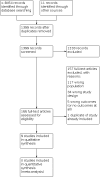
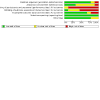
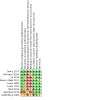
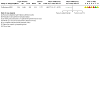
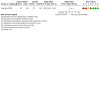
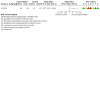
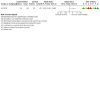
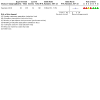
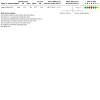
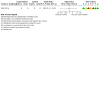
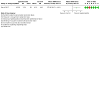

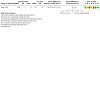
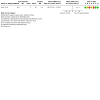
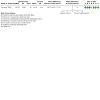
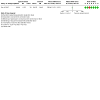
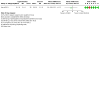
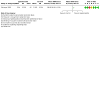
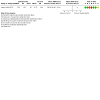
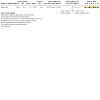
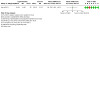
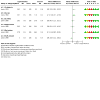
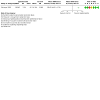
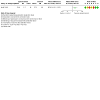
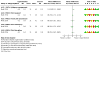
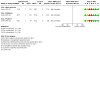
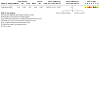
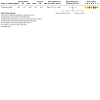
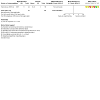
Update of
-
Care delivery and self-management strategies for children with epilepsy.Cochrane Database Syst Rev. 2018 Mar 1;3(3):CD006245. doi: 10.1002/14651858.CD006245.pub4. Cochrane Database Syst Rev. 2018. Update in: Cochrane Database Syst Rev. 2022 Apr 27;4:CD006245. doi: 10.1002/14651858.CD006245.pub5. PMID: 29493780 Free PMC article. Updated.
Comment in
-
Self-care strategies for children with epilepsy.Evid Based Nurs. 2023 Jul;26(3):96. doi: 10.1136/ebnurs-2022-103574. Epub 2022 Oct 17. Evid Based Nurs. 2023. PMID: 36253072 No abstract available.
Similar articles
-
Treatments for seizures in catamenial (menstrual-related) epilepsy.Cochrane Database Syst Rev. 2021 Sep 16;9(9):CD013225. doi: 10.1002/14651858.CD013225.pub3. Cochrane Database Syst Rev. 2021. PMID: 34528245 Free PMC article.
-
Stimulant and non-stimulant drug therapy for people with attention deficit hyperactivity disorder and epilepsy.Cochrane Database Syst Rev. 2022 Jul 13;7(7):CD013136. doi: 10.1002/14651858.CD013136.pub2. Cochrane Database Syst Rev. 2022. PMID: 35844168 Free PMC article.
-
Care delivery and self-management strategies for children with epilepsy.Cochrane Database Syst Rev. 2018 Mar 1;3(3):CD006245. doi: 10.1002/14651858.CD006245.pub4. Cochrane Database Syst Rev. 2018. Update in: Cochrane Database Syst Rev. 2022 Apr 27;4:CD006245. doi: 10.1002/14651858.CD006245.pub5. PMID: 29493780 Free PMC article. Updated.
-
Peer support interventions for parents and carers of children with complex needs.Cochrane Database Syst Rev. 2021 Dec 20;12(12):CD010618. doi: 10.1002/14651858.CD010618.pub2. Cochrane Database Syst Rev. 2021. PMID: 34923624 Free PMC article.
-
Rufinamide add-on therapy for refractory epilepsy.Cochrane Database Syst Rev. 2018 Apr 25;4(4):CD011772. doi: 10.1002/14651858.CD011772.pub2. Cochrane Database Syst Rev. 2018. Update in: Cochrane Database Syst Rev. 2020 Nov 8;11:CD011772. doi: 10.1002/14651858.CD011772.pub3. PMID: 29691835 Free PMC article. Updated.
Cited by
-
Promoting medication compliance in epileptic children: a cross sectional survey.BMC Pediatr. 2024 Sep 14;24(1):583. doi: 10.1186/s12887-024-05011-7. BMC Pediatr. 2024. PMID: 39277767 Free PMC article.
-
The Development of a New Vagus Nerve Simulation Electroceutical to Improve the Signal Attenuation in a Living Implant Environment.Sensors (Basel). 2024 May 16;24(10):3172. doi: 10.3390/s24103172. Sensors (Basel). 2024. PMID: 38794024 Free PMC article.
-
Evolving trends and burden of idiopathic epilepsy among children (0-14 years), 1990-2021: a systematic analysis for the Global Burden of Disease study 2021.Front Neurol. 2025 Mar 17;16:1548477. doi: 10.3389/fneur.2025.1548477. eCollection 2025. Front Neurol. 2025. PMID: 40166644 Free PMC article.
References
References to studies included in this review
Dorris 2017 {published and unpublished data}
-
- Dorris L, Broome H, Wilson M, Grant C, Young D, Baker G, et al.A randomized controlled trial of a manual-based psychosocial group intervention for young people with epilepsy [PIE]. Epilepsy & Behavior 2017;72:89-98. [PMID: ] - PubMed
-
- NCT02349529.An exploratory RCT of a psychosocial group intervention for epilepsy [An exploratory randomised controlled trial of a manualised psychosocial group intervention for young people with epilepsy (PIE)]. clinicaltrials.gov/ct2/show/NCT02349529 (first received 29 January 2015).
Gürhopur 2018 {published data only}
-
- Gürhopur FDT, Dalgiç AL.The effect of a modular education program for children with epilepsy and their parents on disease management. Epilepsy & Behavior 2018;78:210-8. [PMID: ] - PubMed
Jia 2018 {published data only}
-
- Jia LB, Tang L, Cai Y.Comparison of nursing methods of pediatric epilepsy. Journal of Biological Regulators & Homeostatic Agents 2018;32(4):869-74. [PMID: ] - PubMed
Kazemi Majd 2017 {published and unpublished data}
-
- IRCT2015060122514N1.The effect of self-care education based on short message service in adolescents with epilepsy [Comparison of self-care education based on short message service and pamphlet on self-efficacy and adherence to the medication regimen in adolescents with epilepsy]. en.irct.ir/trial/19406 (first received 27 October 2015).
-
- Kazemi Majd R, Hosseini M, Safi MH, Norouzi K, Hosseinzadeh S.The effect of self-care education based on short message service on self-efficacy and adherence to the medication regimen in adolescents with epilepsy referred to Iran Epilepsy Association of in 2016. Journal of Nursing Education 2017;6(4):48-55. [URL: www.sid.ir/en/journal/ViewPaper.aspx?ID=600496]
Lewis 1990 {published data only}
-
- Lewis MA, Salas I, la Sota A, Chiofalo N, Leake B.Randomized trial of a program to enhance the competencies of children with epilepsy. Epilepsia 1990;31(1):101-9. [PMID: ] - PubMed
Lewis 1991 {published data only}
-
- Lewis MA, Hatton CL, Salas I, Leake B, Chiofalo N.Impact of the Children's Epilepsy Program on parents. Epilepsia 1991;32(3):365-75. [PMID: ] - PubMed
Modi 2016 {published data only}
Saengow 2018 {published data only}
-
- Saengow VE, Chancharoenchai P, Saartying W, Pimpa W, Chotichanon N, Lewsirirat T, et al.Epilepsy video animation: Impact on knowledge and drug adherence in pediatric epilepsy patients and caregivers. Clinical Neurology and Neurosurgery 2018;172:59-61. [DOI: 10.1016/j.clineuro.2018.06.031] [PMID: ] - DOI - PubMed
Tieffenberg 2000 {published data only}
References to studies excluded from this review
Austin 2002 {published data only}
-
- Austin JK, McNelis AM, Shore CP, Dunn DW, Musick B.A feasibility study of a family seizure management program: "Be Seizure Smart". Journal of Neuroscience Nursing 2002;34(1):30-7. [DOI: 10.1097/01376517-200202000-00007] - DOI
Bahrani 2017 {published data only}
-
- Bahrani K, Singh MB, Bhatia R, Prasad K, Vibha D, Shukla G, et al.Telephonic review for outpatients with epilepsy - a prospective randomized, parallel group study. Seizure 2017;53:55-61. [PMID: ] - PubMed
Dash 2015 {published data only}
-
- Dash D, Sebastian TM, Aggarwal M, Tripathi M.Impact of health education on drug adherence and self-care in people with epilepsy with low education. Epilepsy & Behavior 2015;44:213-7. [PMID: ] - PubMed
Glueckauf 2002 {published data only}
-
- Glueckauf RL, Fritz SP, Ecklund-Johnson EP, Liss HJ, Dages P, Carney P.Videoconferencing-based family counseling for rural teenagers with epilepsy: phase 1 findings. Rehabilitation Psychology 2002;47(1):49-72. [DOI: 10.1037/0090-5550.47.1.49] - DOI
Hallfahrt 2007 {published data only}
-
- Hallfahrt T.FLIP&FLAP educational program in epilepsy in childhood and adolescence. Kinderkrankenschwester 2007;26(12):516-21. [PMID: ] - PubMed
Ibinda 2014 {published data only}35680481
Jantzen 2009 {published data only}
-
- Jantzen S, Müller-Godeffroy E, Hallfahrt-Krisl T, Aksu F, Püst B, Kohl B, et al.FLIP&FLAP - a training programme for children and adolescents with epilepsy, and their parents. Seizure 2009;18(7):478-86. [PMID: ] - PubMed
Li 2013 {published data only}
-
- Li J, Si Y, Hu J, Liu L, Deng Y, He J, et al.Enhancing medical compliance of patients with convulsive epilepsy in rural community: a randomized intervention trial. Epilepsia 2013;54(11):1988-96. [PMID: ] - PubMed
Mar 2005 {published data only}
-
- Mar S, Dunkley C, Al-Ansari I, Whitehouse WP.Comparison of a dedicated children's seizure clinic to mixed general paediatric clinics. Child: Care, Health and Development 2005;31(5):597-602. [PMID: ] - PubMed
Modi 2013 {published data only}
Pfäfflin 2012 {published data only}
-
- Pfäfflin M, Petermann F, Rau J, May TW.The psychoeducational program for children with epilepsy and their parents (FAMOSES): results of a controlled pilot study and a survey of parent satisfaction over a five-year period. Epilepsy & Behavior 2012;25(1):11-6. [PMID: ] - PubMed
-
- Rau J, May TW, Pfäfflin M, Heubrock D, Petermann F.Education of children with epilepsy and their parents by the Modular Education Program Epilepsy for Families (FAMOSES) - results of an evaluation study [Schulung von Kinderen mit Epilepsie und deren Eltern mit dem Modularen Schulungsprogramm Epilepsie für Familien (FAMOSES) - Ergebnisse einer Evaluationsstudie]. Die Rehabilitation 2006;45(1):27-39. [PMID: ] - PubMed
Price 2004 {published data only}
-
- Price V, Murphy SO, Cureton VY.Increasing self-efficacy and knowledge through a seizure education programme for special education teachers. Journal of School Nursing 2004;20(1):43-9. [PMID: ] - PubMed
Shore 2008 {published data only}
-
- Shore CP, Perkins SM, Austin JK.The Seizures and Epilepsy Education (SEE) program for families of children with epilepsy: a preliminary study. Epilepsy & Behavior 2008;12(1):157-64. [PMID: ] - PubMed
Snead 2004 {published data only}
-
- Snead K, Ackerson J, Bailey K, Schmitt MM, Madan-Swain A, Martin RC.Taking charge of epilepsy: the development of a structured psychoeducational group intervention for adolescents with epilepsy and their parents. Epilepsy & Behavior 2004;5(4):547-56. [PMID: ] - PubMed
Additional references
Al‐Aqeel 2020
Austin 1997
-
- Austin JK, Boer H.Disruption in social functioning and services facilitating adjustment for the child and adult with epilepsy. In: Engel J, Pedley T, editors(s). Epilepsy: A Comprehensive Textbook. Philadelphia: Lippincott-Raven, 1997:191-201.
Bandstra 2008
-
- Bandstra NF, Camfield CS, Camfield PR.Stigma of epilepsy. Canadian Journal of Neurological Sciences 2008;35(4):436-40. [PMID: ] - PubMed
Berg 2010
-
- Berg AT, Berkovic SF, Brodie MJ, Buchhalter J, Cross JH, Emde Boas W, et al.Revised terminology and concepts for organization of seizures and epilepsies: report of the ILAE Commission on Classification and Terminology, 2005-2009. Epilepsia 2010;51(4):676-85. [PMID: ] - PubMed
Betts 1992
-
- Betts T.Epilepsy services. What people need, what they want, what they get. Acta Neurologica Scandinavica 1992;S140:95-100. [PMID: ] - PubMed
Bradley 2009
Bradley 2016
Chappell 1992
-
- Chappell B.Epilepsy: patient views on their condition and treatment. Seizure 1992;1(2):103-9. [PMID: ] - PubMed
Clark 2008
-
- Clark NM, Cabana MD, Nan B, Gong ZM, Slish KK, Birk NA, et al.The clinician-patient partnership paradigm: outcomes associated with physician communication behavior. Clinical Pediatrics 2008;47(1):49-57. [PMID: ] - PubMed
Clark 2010
-
- Clark NM, Stoll S, Youatt EJ, Sweetman M, Derry R, Gorelick A.Fostering epilepsy self management: the perspectives of professionals. Epilepsy & Behavior 2010;19(3):255-63. [PMID: ] - PubMed
Egger 1997
Elwyn 2003
England 2012
Fitzsimons 2012
-
- Fitzsimons M, Normand C, Varley J, Delanty N.Evidence-based models of care for people with epilepsy. Epilepsy & Behavior 2012;23(1):1-6. [PMID: ] - PubMed
GRADEpro GDT [Computer program]
-
- GRADEpro GDT.Version accessed 9 May 2019. Hamilton (ON): McMaster University (developed by Evidence Prime). Available at gradepro.org.
Higgins 2003
Higgins 2021
-
- Higgins JP, Thomas J, Chandler J, Cumpston M, Li T, Page MJ, Welch VA, editor(s).Cochrane Handbook for Systematic Reviews of Interventions Version 6.2 (updated February 2021). Cochrane, 2021. Available from training.cochrane.org/handbook.
Michaelis 2020
Mittan 2009
-
- Mittan RJ.Psychosocial treatment programs in epilepsy: a review. Epilepsy & Behavior 2009;16(3):371-80. [PMID: ] - PubMed
Rau 2006
-
- Rau J, May TW, Pfäfflin M, Heubrock D, Petermann F.Education of children with epilepsy and their parents by the modular education program epilepsy for families (FAMOSES) - results of an evaluation study [Schulung von Kindern mit Epilepsie und deren Eltern mit dem Modularen Schulungsprogramm Epilepsie für Familien (FAMOSES) - Ergebnisse einer Evaluationsstudie]. Die Rehabilitation 2006;45(1):27-39. [PMID: ] - PubMed
Sander 1990
-
- Sander JW, Hart YM, Johnson AL, Shorvon SD.National General Practice Study of Epilepsy: newly diagnosed epileptic seizures in a general population. Lancet 1990;336(8726):1267-71. [PMID: ] - PubMed
Schünemann 2013
-
- Schünemann H, Brożek J, Guyatt G, Oxman A, editor(s).Handbook for grading the quality of evidence and the strength of recommendations using the GRADE approach (updated October 2013). GRADE Working Group, 2013. Available from gdt.guidelinedevelopment.org/app/handbook/handbook.html.
SIGN 2003
-
- Scottish Intercollegiate Guidelines Network (SIGN).Diagnosis and Management of Epilepsy in Adults: a National Clinical Guideline (No. 70). Edinburgh: Scottish Intercollegiate Guidelines Network, Royal College of Physicians, 2003.
SIGN 2005
-
- Scottish Intercollegiate Guidelines Network (SIGN).Diagnosis and Management of Epilepsies in Children and Young People: a National Clinical Guideline (No. 81). Edinburgh: Scottish Intercollegiate Guidelines Network, 2005.
Thapar 1996
WHO 2013
-
- World Health Organization.Epilepsy. www.who.int/news-room/fact-sheets/detail/epilepsy (accessed 16 December 2013).
References to other published versions of this review
Fleeman 2015
Fleeman 2018
Lindsay 2006
Publication types
MeSH terms
LinkOut - more resources
Full Text Sources
Medical

